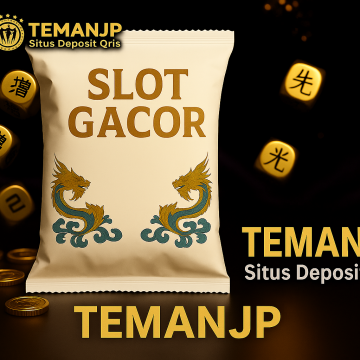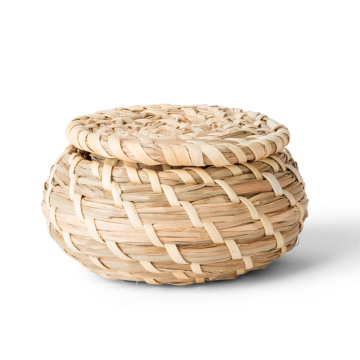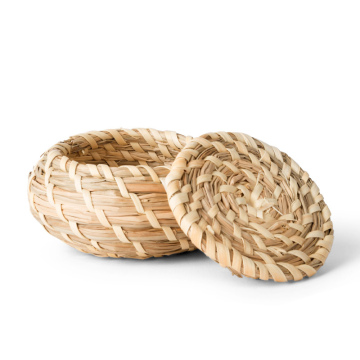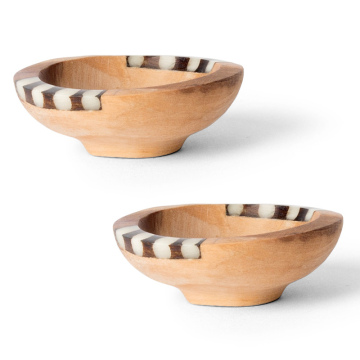Sizzling Sensations: Enjoying Yakitori, Japan’s Grilled Treasure
Introduction to Yakitori: The Heart of Japanese Grilling
Yakitori, a traditional Japanese dish consisting of skewered and grilled chicken, holds a significant place in Japanese cuisine and culture. Originating in the Edo period, approximately between the 17th and 19th centuries, this culinary gem was initially crafted from leftover poultry, aimed at minimizing waste. Over time, yakitori has evolved into a cherished food item, showcasing a blend of flavours, techniques, and community engagement that defines Japanese dining.
In Japan, yakitori transcends its role as mere sustenance; it embodies the spirit of social interaction often found in izakayas and bustling street stalls. These casual dining establishments serve as communal spaces where friends and family gather, enjoying a variety of yakitori dishes in a relaxed atmosphere. The aroma of grilling chicken mingles with lively conversation, providing a quintessential Japanese experience deeply embedded in the culture.
When it comes to the preparation of yakitori, the choice of chicken is paramount. Different parts of the chicken—such as thigh, breast, liver, and skin—are often used, each providing a unique texture and flavour profile. Accompanying these options are essential grilling techniques that typically involve charcoal grilling, known as "sumibi." This culinary traditional method not only enhances the taste but also imbues the chicken with a smoky essence that is characteristic of expertly made yakitori.
The interaction between the skewer and the chicken creates a delightful culinary experience. Wooden or metal skewers are typically employed, each adding its own nuances to the final product. The skillful combination of seasoning, marinade, and grilling technique culminates in a beloved dish that symbolizes the heart of Japanese grilling. As yakitori continues to gain popularity globally, its authentic roots and cultural significance remain a focal point for both culinary enthusiasts and casual diners alike.
Types of Yakitori: A Skewered Delight
Yakitori, a culinary traditional Japanese dish, offers a delightful variety of skewered chicken options that appeal to a wide range of palates. Among the most popular types is momo, which refers to the succulent chicken thigh. Known for its tender texture and rich flavor, momo is often seasoned with a simple coat of salt or a sweet soy sauce glaze called tare. This preparation allows the natural juices of the meat to shine through, making it a favorite for many enthusiasts of yakitori.
Another well-loved variant is negima, which combines the moistness of chicken thigh with the fresh crunch of green onion. This pairing not only enhances the dish's visual appeal but also adds a contrasting texture and flavor profile. It is typically grilled on skewers, allowing the savory juices of both ingredients to meld together spectacularly as they cook over the hot flames. The resulting taste experience is both stimulating and satisfying, showcasing the mastery of yakitori grilling.
Tsukune, or chicken meatballs, represents another delicious yakitori option. Tsukune is crafted from ground chicken mixed with various seasonings, herbs, and sometimes even cartilage for extra texture. Grilled on skewers and often glazed with tare, tsukune boasts a savory, umami-rich flavor that can be further enhanced with a dipping sauce or a sprinkle of shichimi togarashi, a Japanese spice blend.
Modern adaptations of yakitori have also led to vegetarian alternatives, which some establishments now offer to cater to diverse dietary preferences. These variations may include skewers featuring mushrooms or grilled vegetables, maintaining the essence of culinary traditional yakitori while inviting those who favor plant-based dishes to enjoy this beloved culinary treasure.
The Art of Grilling Yakitori: Techniques and Tips
Grilling yakitori is an art that requires a keen understanding of techniques, tools, and ingredients to achieve that perfect balance of flavor and texture. A critical element in the grilling process is the use of binchotan charcoal. Known for its high heat and long burn time, binchotan produces a distinct smoky flavor that is essential to authentic yakitori. Unlike regular charcoal, it burns cleanly, allowing the natural flavors of the chicken and seasonings to shine without overwhelming them.
When it comes to grilling methods, there are various approaches that can be employed. Culinary Traditional yakitori is often grilled over an open flame, which adds a delightful char and enhances the umami profile of the dish. Alternatively, a grill pan can be used for those who may not have access to an open flame. Regardless of the method chosen, it is important to maintain consistent temperatures, as fluctuations can lead to uneven cooking and affect the overall texture.
For beginners aiming to perfect their yakitori, attention to detail in preparation is crucial. The choice between marinating with tare— a sweet soy-based sauce—versus seasoning with shio, or salt, plays a pivotal role. Tare enhances the richness of the meat, while shio emphasizes its natural flavors. Experimentation with combinations of both can lead to exciting results, allowing for personal preference in flavor profiles.
Texture is another essential aspect when grilling yakitori. Skewers should be spaced evenly to allow for proper heat circulation, preventing steaming and ensuring a satisfying grill mark. Taking the time to master these techniques will not only improve your yakitori grilling skills but will also deepen your appreciation for this delightful Japanese cuisine. Embrace the process, and the outcome will surely be a mouthwatering experience.
Where to Enjoy Yakitori: A Culinary Journey
Embarking on a culinary journey to appreciate yakitori in Japan reveals a vibrant tapestry of flavors and experiences. This delightful grilled dish has carved out its niche in many cities, each offering unique interpretations and settings that elevate the dining experience. In Tokyo, one can find izakayas, or casual dining pubs, brimming with the smoky scents of skewered delicacies cooking over charcoal. Notable neighborhoods such as Shinjuku and Shibuya are teeming with establishments specializing in yakitori, from bustling street vendors to chic restaurants that take pride in their artisanal approach.
In addition to Tokyo, cities like Osaka and Kyoto hold their own culinary treasures. Osaka is renowned for its lively atmosphere and street food culture, with numerous stalls providing a casual yet charming platform to savor inexpensive yakitori alongside local refreshments. In Kyoto, culinary traditional dining spaces such as kaiseki restaurants often include yakitori as part of their multi-course meals, ensuring that guests experience a harmonious blend of seasonal ingredients and refined techniques. Each city contributes its own regional flair, enriching the allure of this simple yet profound dish.
The choice of drink can significantly enhance the enjoyment of yakitori. Pairing these grilled skewers with sake—a rice-based alcoholic beverage—or shochu, a distilled spirit often made from barley or sweet potatoes, serves to elevate the flavors. Sake complements the richness of the yakitori, allowing the natural umami notes to shine through, while shochu offers a spirited contrast that can refresh the palate. Whether enjoyed at a street-side vendor or a celebrated restaurant, the experience of indulging in yakitori is not merely about food; it is an exploration of culture, flavor, and the warm hospitality that Japan is known for.
Situs Gacor Pulsa Tri 5K Tanpa Potongan Terbaru 2025
Temukan situs gacor deposit pulsa Tri 5K tanpa potongan terbaru di tahun 2025 dan nikmati beragam permainan online dengan aman. Penting untuk memilih situs yang terpercaya agar pengalaman bermain Anda menyenangkan. Dapatkan kesempatan untuk meraih berbagai bonus dan promosi menarik serta pastikan semua transaksi diproses tanpa biaya tambahan. Bergabunglah dan nikmati permainan seru yang ditawarkan oleh situs gacor pulsa di tahun ini.
Situs Deposit Pulsa Tri 5K Tanpa Potongan Paling Gacor
Temukan kemudahan transaksi dengan situs deposit pulsa Tri 5k tanpa potongan. Nikmati proses deposit yang cepat dan efisien tanpa ada potongan, serta optimalkan setiap nilai deposit Anda. Dengan langkah-langkah yang sederhana, Anda bisa melakukan transaksi dengan mudah dan merasa lebih menguntungkan. Bergabunglah sekarang dan gunakan pulsa Anda secepatnya tanpa menunggu lama!
Cara Mudah Main Situs PG Soft Via Pulsa Tri dan Indosat 5000 Tanpa Potongan
Situs PG Soft kini semakin populer di kalangan penggemar permainan online. Dengan berbagai pilihan permainan yang menarik dan bonus yang menggiurkan, semakin banyak orang yang tertarik untuk mencoba keberuntungan mereka. Salah satu cara yang praktis untuk melakukan deposit adalah melalui pulsa, khususnya dengan provider Tri dan Indosat.
Keuntungan Menggunakan Pulsa untuk Deposit
Dengan menggunakan deposit pulsa Tri dan deposit pulsa Indosat, pemain bisa melakukan deposit mulai dari nominal 5000 tanpa potongan. Ini adalah pilihan yang sangat menguntungkan, terutama bagi mereka yang tidak memiliki rekening bank atau kartu kredit. Proses deposit pun sangat cepat dan mudah, sehingga Anda bisa langsung bermain tanpa harus menunggu lama.
Langkah-Langkah Melakukan Deposit
Untuk melakukan deposit di situs PG Soft via pulsa, langkahnya sangat sederhana. Pertama, pastikan Anda memiliki pulsa yang cukup. Kemudian, akses situs PG Soft dan lakukan pendaftaran jika Anda belum memiliki akun. Pilih opsi deposit via pulsa, masukkan nomor telepon, dan jumlah deposit yang diinginkan. Ikuti instruksi yang diberikan dan tunggu konfirmasi. Setelah selesai, saldo Anda akan segera terisi dan siap digunakan untuk bermain.











